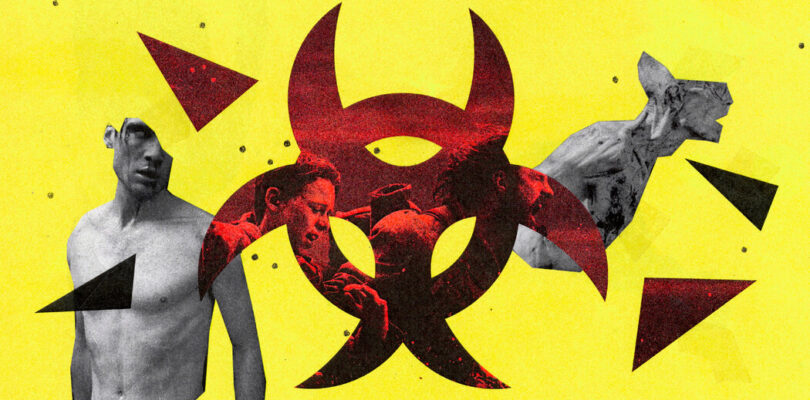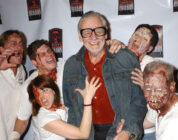“28 Years Later” leaps forward through time — into a world that has changed in worrisome parallel to ours.
It begins with a deadly lab leak. Inside an English research facility in Cambridge, a bank of TV monitors is blasting clips of documentary violence — riots, hangings — into the eyes of a chimpanzee, a test subject in what we’d now recognize as “gain of function” virus research. Today, the rest plays out like Instagram highlights: Animal rights activists burst into this “Clockwork Orange” tableau and free an infected chimp. The chimp promptly mauls its human liberator. Then comes the familiar transformation — spasm, contortion, brisk snap into embodied demon — that starts murderous insanity spreading through the lab’s remaining humans, and then to those outside.
This was the start of Danny Boyle’s “28 Days Later,” the movie that helped reboot the zombie apocalypse, turning a moribund horror subgenre into one of the dominant forces in entertainment. Boyle’s innovations — tonal seriousness, punk-rock filmmaking, speedy zombies bearing infectious disease — are still visible in everything from “World War Z” to “The Last of Us.” But it’s that opening scene, in which triggering media turns a primate virus into a fatal blood-borne psychosis, that sets up a prescient metaphor for what has happened in the decades between the movie’s release in 2002 and the arrival, this month, of “28 Years Later,” a new sequel from Boyle and the original screenwriter, Alex Garland. Across those years, a digital intoxication not unlike the film’s “Rage virus” really has made society feel angrier, crazier and more unstable.
The original film had a grungy kinetic intensity; Boyle used digital video and the fast, cheap Canon XL1 to energize his shots, finding a jittery, claustrophobic, hyperreal visual language. Using what Garland has called a “Tootsie” cut — after the moment in that movie when Dustin Hoffman is suddenly revealed dressed as a woman — the story jumps straight from the initial outbreak of the virus to the moment, 28 days later, when a young bike messenger, Jim, awakes from a coma in an abandoned hospital and wanders out into an indelible vision of London after a people-vanishing cataclysm. (The walls and kiosks, covered with missing-person fliers, are one of several images that were transformed by real-life events after the film began shooting on Sept. 11, 2001.) He is rescued from his first contact with the infected by two masked survivors, one of whom explains that the apocalypse first appeared as a news item — “and then it wasn’t on the TV anymore,” she says, “it was coming through your windows.” Jim’s small crew must resist both the infected and a company of British soldiers who offer protection at the cost of sexual slavery. Finally escaped to a remote Lake District idyll, they see a military jet flyover as proof that civilization still endures — that the late-’90s neoliberal order may soon be restored.
Clearly, things didn’t quite play out that way. A 2007 sequel, “28 Weeks Later” (neither original creator was involved) was rooted in post-9/11 security and warfare, imagining survivors huddled in a militarized safe zone controlled by American-led NATO troops, testing what a fearful society will tolerate to defend itself from an external threat. Then time passed and the paradigm shifted; ordinary people’s anger and fear was redirected from distant menaces to various enemies within. Real-life media and political institutions seemed to succumb to their own Rage, a process amplified by everything from new apps and platforms to a nonfictional pandemic. Now, “28 Years Later” shows us how the weaponized virus alters even the uninfected, reshaping society in terrifying ways.
‘Some of the stuff in this film is about people misremembering the world we had.’
The new film imagines a kind of extreme Brexit, extended a generation into the future. It, too, opens in the new-millennium world of pixels and screens, with a close-up of a TV playing the old British toddler show “The Teletubbies,” whose original series ended in 2001. But from there it moves to the residents of the tidal Holy Island, where, 28 years later, residents maintain a rugged nationalism apart from both the existing England and the smartphone-using world they’ve never seen. “We’ve gone backwards,” is how Boyle explained it to me. “Because inevitably you would retrench back to analog.”




